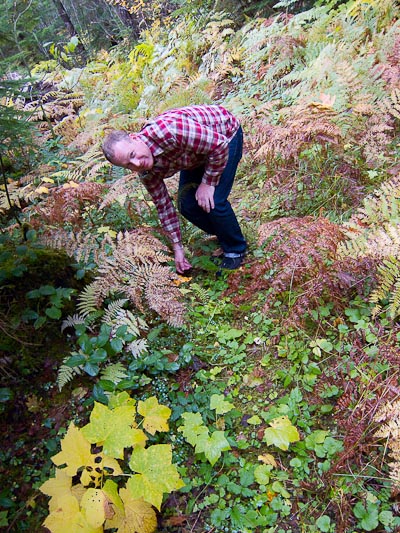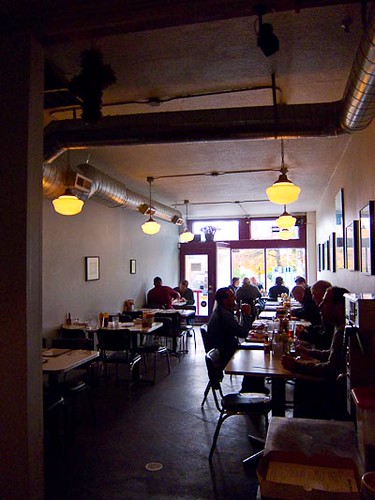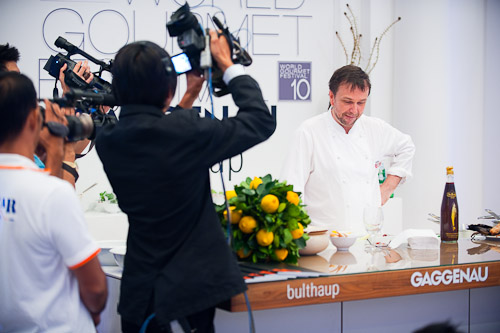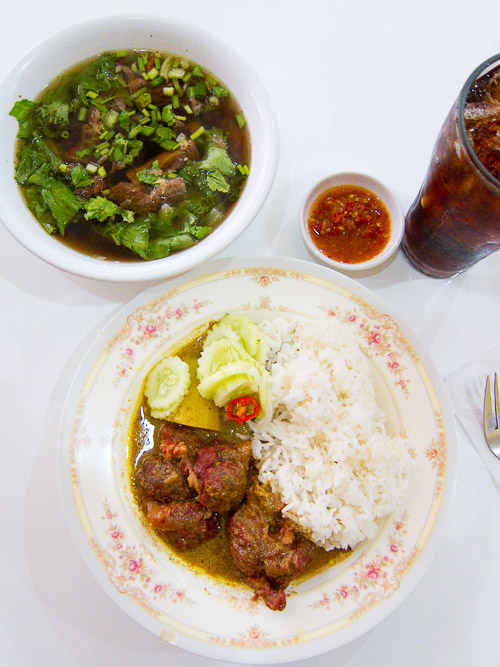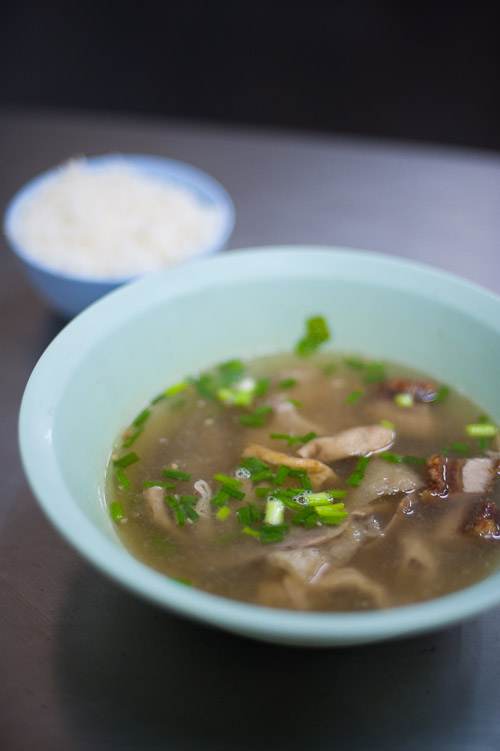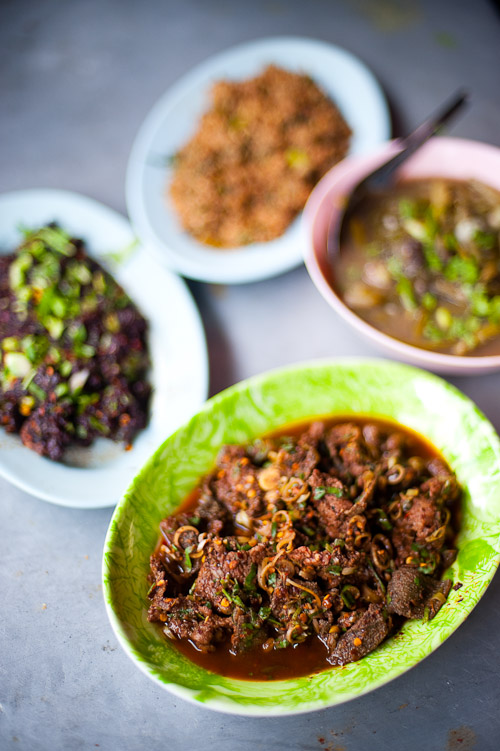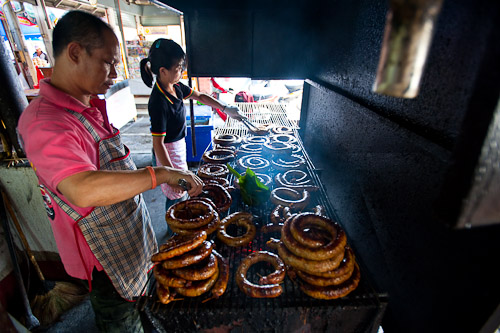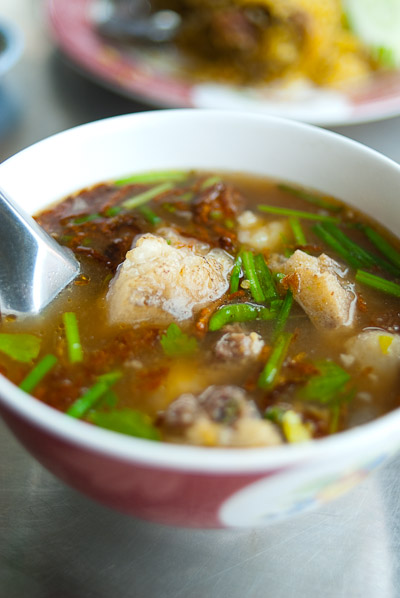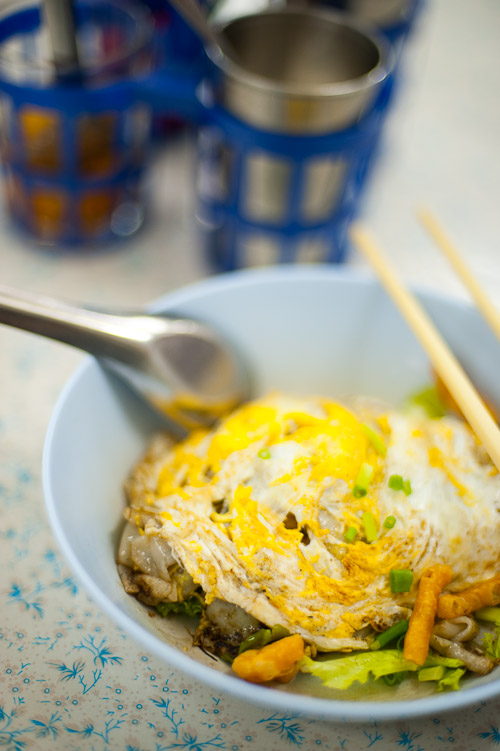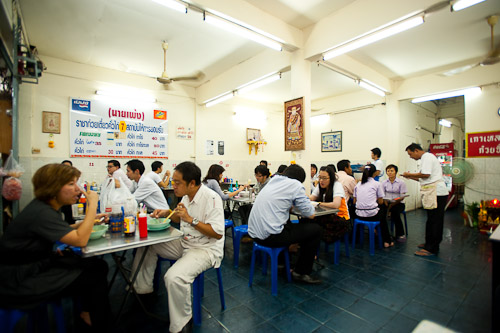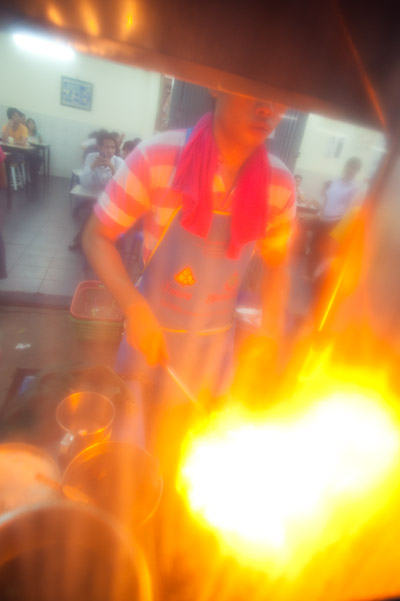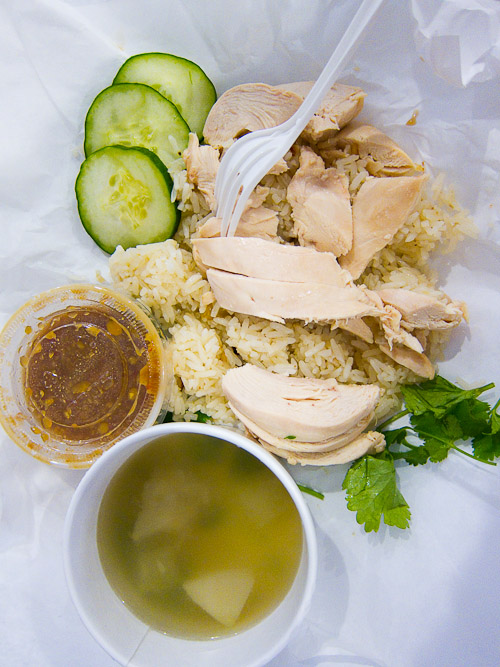 Most likely spurred on by similar success in LA, Portland's food stall scene has exploded in the last year. Stalls now allegedly number in the upper 500s and several so-called 'cart pods' can be found in various Portland neighbourhoods. But despite the buzz, not all carts are buzzing with customers. In fact, I'd say that relatively few appear to draw substantial numbers of diners. One of the lucky ones is Nong's Khao Man Gai:
Most likely spurred on by similar success in LA, Portland's food stall scene has exploded in the last year. Stalls now allegedly number in the upper 500s and several so-called 'cart pods' can be found in various Portland neighbourhoods. But despite the buzz, not all carts are buzzing with customers. In fact, I'd say that relatively few appear to draw substantial numbers of diners. One of the lucky ones is Nong's Khao Man Gai:
A native of Bangkok, Nong has been in Portland seven years and among other things, worked a stint at Pok Pok. In 2008 she decided to go into business for herself and less than two years later, her stall is one of the most popular in Portland. As illustrated above, the lines go around the block, and the amount of press this girl has received is pretty amazing:
Nong got in relatively early on the food cart trend and was able to score a prime downtown location. The food she's serving is also very good (I'll get to that in a minute). And I know that her success is also the result of good old-fashioned hard work. But if you ask me, a substantial portion of her success is a no-brainer: Unlike other carts that try to serve as many items as possible, Nong clung to the central tenet of good Thai street food: serve one tasty dish that you can do really well. Her dish is khao man kai (Hainanese chicken rice), and other than drinks, that's all you can get at her stall; no pad Thai, no vegetarian green curry, no dessert. And despite the fact that she's serving a single dish the vast majority of Americans have never even heard of, it's worked.
After having read about Nong's Khao Man Gai on websites and blogs for the last year, I was finally able to try a packet firsthand. Ducking into the lobby of a nearby building, I dug in and almost immediately my suspicions were confirmed: I reckon that Nong's khao man is as good -- or perhaps even better -- than that of your average Thai cart or restaurant. The rice was toothsome and slightly oily (as it should be, yet often isn't in Thailand) and had the slightest fragrance of galangal and ginger. The chicken was tender and tasty and the dish comes accompanied by an exceptionally rich and fragrant broth -- the delicious by-product of boiling those chickens. And perhaps most importantly, Nong's nam jim (dipping sauce) is pretty much spot on: tasty and moreish, sour, spicy and salty, but with a slight emphasis on the sweet.
Nong's Khao Man Gai Near cnr of SW 10th and SW Alder, Portland, Oregon 10am-2pm Mon-Fri & 11am-2pm Sat
View Thai Eats in a larger map















